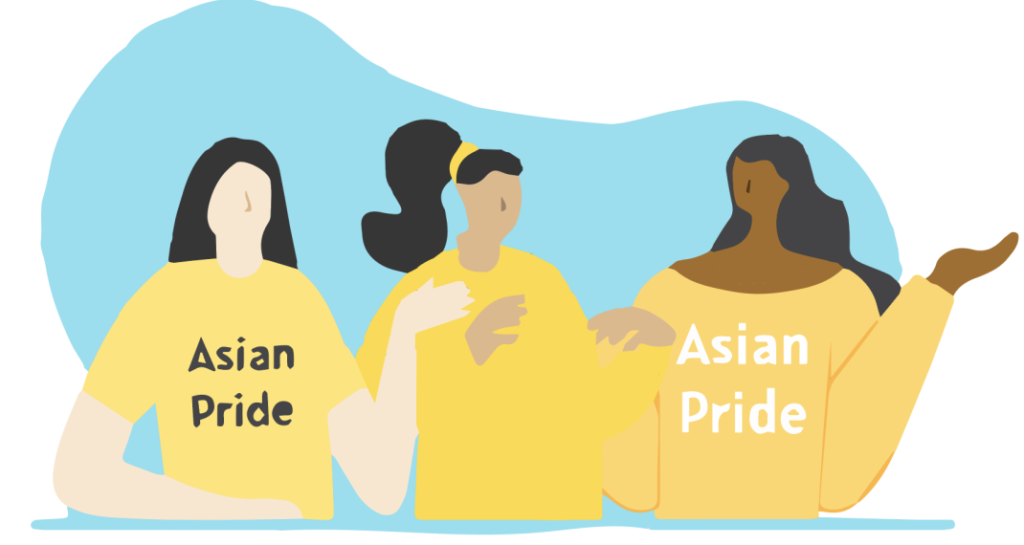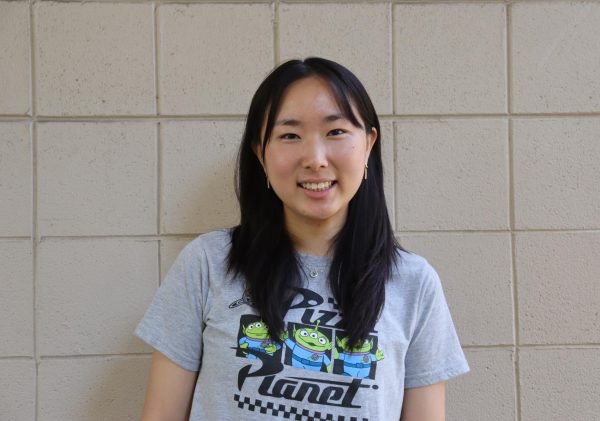Growing up in San Francisco, former assistant principal Karen Hyde recalls living in a multicultural neighborhood and attending a diverse school. However, after becoming an assistant principal at Saratoga High in the 1970s, she was shocked by how almost 97% of the students in the school were white.
During Hyde’s 40 years at the school, the Asian American population here increased dramatically, particularly in the 1990s. In 1968, fewer than 2% were Asians, according to data gathered for the school’s accreditation process through the Western Association of Schools and Colleges (WASC). Fast forward to 2012 and that year’s report showed that approximately 34% of students were white and 57% were Asian.
Racial tensions arise within the school
The changed demographics of the student body showed up in the school’s increasing emphasis on top-flight academics. And in the 1990s, tensions between some whites and Asian Americans rose, according to guidance counselor Eileen Allen, who was a student at the school from 1997 to 2001.
As tougher courses were added to the curriculum and more students took them, a cycle of increasing academic competition grew. Many students, whites in particular, started to feel intimidated by the competitive environment, which they attributed to the influx of Asian American students, Allen said.
One of the first incidents where school administrators became aware of racial tensions occurred in 1996. According to Hyde, several Asian American students formed an “unofficial gang” and would dress in yellow shirts with the term “AP,” standing for Asian Pride. They would commonly say the phrase “Asian Pride, baby.”
“It’s interesting because I think you have this [targeted aggression] from the white community, and then there was a pushback in the other direction from the Asian community to set themselves apart and have pride with what they brought to the school,” Allen said. “It’s like that was their protective mechanism and their defense against feeling like they were being rejected in the community.”
Hyde recalled a group of around eight Asian students showing up to the 1999 senior group photo wearing yellow shirts with the words AP printed on them. Consequently, the school administration started banning colored shirts, distinct clothing and hand signs in future senior photos.
“The incident wasn’t malicious. Wearing the AP shirts wasn’t a statement of power,” Hyde said. “It was a way for a bunch of Asian kids to say ‘this is our color.’”
Another incident that took place between 1995 and 1996 was the geographical parking lot division between Asian American and white students. Many Asian students would park in the back parking lot near the math and science buildings, areas that are now reserved for staff, while the white students would park in the front of the school near the track and gym.
Hyde recalled confronting students about the parking lot division. Asian American students claimed that they parked in the back parking lot because it was a lot closer to their classrooms, while the white students claimed they parked near the track and gym because that was where they hung out after school.
Most of the separation resulted from the lack of intermingling between the two races, a phenomenon that has improved significantly with the disappearance of physical barriers in the current school culture, such as the parking lot division.
Another aspect that affected the parking lot division was the tendency for students to park wherever their friends would park, regardless of their race. According to Hyde, Asian American students took more STEM classes, where they formed more friends, and would mostly park in the back parking lot near the STEM buildings. White students were more involved in sports and formed friendships with their teammates, so they parked near the track and gym.
Former assistant principal Kerry Mohnike, who retired in September 2021 after working 30 years at the school, said there was “bound to be some sort of tension following a significant population shift in the environment.”
“It’s like jockeying for your societal status, and there are certain people that fall into that kind of competitive nature,” Mohnike said. “It doesn’t really matter what culture you’re from. It’s just like, ‘I’m not going to do that because they do that or I’m going to do this because my group does this.’”
Reasons behind the increase in the Asian population
The development of Silicon Valley accelerated in 1961 when the invention of integrated circuits triggered an explosive growth in the number of high-technology jobs in the area. The number of high-tech jobs increased from 18,000 in 1959 to 117,000 in 1971 and 268,000 in 1990. More than 230,000 high-tech jobs were created in Silicon Valley from 1992 to 1999, many of them filled by immigrants from countries like Taiwan, South Korea, India and China.
Due to the surging need for high-tech workers, the U.S. relaxed immigration quotas for “aliens with special training.”
Allen recalled that the average academic performance of the students started soaring during the term of former principal Kevin Skelly, who served at the school from 1993 to 2004. Allen described Skelly as an “incredibly thoughtful” principal who loved socializing with the students. She remembers him as always very “enthusiastic” about the academic aspect of the school, and he strongly believed in having a rigorous curriculum through the introduction of Advanced Placement and honors courses, thus contributing to Saratoga High’s evolution into a more academically rigorous school.
In an interview with The Falcon, Skelly, now retired, said that “the students [during that time] were some of the most outstanding kids that you would ever find anywhere” and “the school has always been a great school, but during that time, it became a world-class school.” He said nothing has changed the school’s rise toward academic excellence.
Allen noticed that the transition to a world class school spurred the change of the school’s demographics.
“As we grew this reputation of being really strong academically, I think the word spread that ‘hey, if you were coming to the Bay Area, then Saratoga High School would be a great place to send your kids because they can get into good colleges and take advanced classes that will prepare them for college,’” Allen said. “So it almost became a destination for families seeking to provide a great education for their kids, including ones from mainland China and Taiwan.”
Influx of Asian Americans results in changes to the school’s culture.
In the recent past, 855 out of the school’s 1,322 students were Asian Americans (roughly 65% of the school’s population), according to the 2018-2019 WASC data.
The number of whites enrolled at the school dropped by roughly 900 students between 1968 to 2012. This was at least partly because of “white flight,” a phenomenon where whites move out of areas that hold an increasing minority population.
As Asian students filled the school’s hallways, the nature of the school’s academics followed.
In the 1960s, there were no AP or honors classes even though the school itself was still academically focused and most students went to college. According to 1968 WASC data, classes were instead split into a three-way track: an A track for students considered to be likely college-bound, a B track for students in the middle of the road and a C track for students considered to be “less smart.” This system was known as tracking and received backlash from various school districts for creating a toxic learning environment for students. The practice of tracking ended in the 1970s.
In 1984, the school implemented AP courses such as AP Biology, AP US History and AP Statistics. During 1997 to 1998, they also eliminated the prerequisites for honors and AP courses, where students had to receive a teacher’s recommendation or an A in a previous class.
This shift in course curriculum meant that more students in advanced classes and certain competitive programs such as speech and debate tended to be Asian. An observation from the 2011 to 2012 WASC data said “Asian students take more AP classes than all other ethnicities” and consequently cited a “drop in white students.”
“There was sort of this feeling that ‘now Saratoga High School has become super academic all of a sudden, and I’m under all this academic pressure that wasn’t there before,’” Allen said.
How racial tensions have improved over the years
While many racial tensions in the ‘90s came to the surface, today’s campus shows an increased intermingling between races during break and lunch, and of course, no more separation in the parking lot or creations of racially motivated exclusive groupings. Though the racial composition of classes hasn’t changed, the school has put a great effort into creating a diverse blended environment over the years.
According to principal Greg Louie, the school has strived to promote equality, diversity and inclusion through wellness center events, Speak up for Change and participation in national weeks like “United Against Hate Week,” which is dedicated to rejecting hate of any kind to promote equality.
During his term as principal in the 1990s, Skelly said the school made an effort to make the Asian American community feel welcome. He recalled visiting Asian parents in their homes to talk about the different school cultures in their home countries and in America, as well as how the school wanted to make them feel comfortable in participating in school activities and organizations such as the school site council and the Parents Teacher Association.
“Direct parental involvement in helping make school decisions never happened in a school in Korea, India, Taiwan or China,” Skelly said. “A few Chinese parents actually hosted meals [for school admin] at their house, and administrators would go to their house and say ‘hey, we want you to get involved. We know in your country, parents don’t often come to [school] events, but we want you here, and would like for you to share your culture with us.’”
Additionally, Mohnike recalls the school inviting professional development speakers in the early ‘90s to talk about differences between the Asian American and white communities and conduct diversity training for students and staff.
She also said as students became more used to the diversity within the school, they grew more comfortable with each other.
“Every time the population ‘stabilizes,’ meaning the demographics aren’t shifting too much, people get to know each other and start to work out their perceptions and preconceived ideas of how another group is supposed to be,” Mohnike said. “So then, it sort of calms down and people are like, ‘oh, yeah, OK, they’re people just like me.’”
Senior Taylor Wilson, who is of Black and Korean descent and is part of the core team of the Anti-Racism Task Force, which began during the pandemic, described seeing measured progress in key areas.
“I think the attitude toward racism and the community’s understanding of the importance of education, especially in social issues, has brought us a step closer to erasing racism,” Wilson said. “However, there is always going to be work to do.”
While Wilson said he sees intermingling between races and finds it “common to see students with different identities and ethnic makeup gathering together,” he still finds many friend groups lack racial diversity.
“I feel like the intermingling between races is almost an expectation,” Wilson said. “It does disappoint me that this is even being highlighted as a significant achievement.”
Wilson praised Bombay in the Bay (BNB), which he said promotes unity and outreach across several races in the school environment. While BNB celebrates traditional Indian dances, it allows non-Indian students to be involved in the performances.
“I understand there is comfort in what’s common,” Wilson said, “but the hope is always for people to love others for their character as opposed to their appearance.”

































